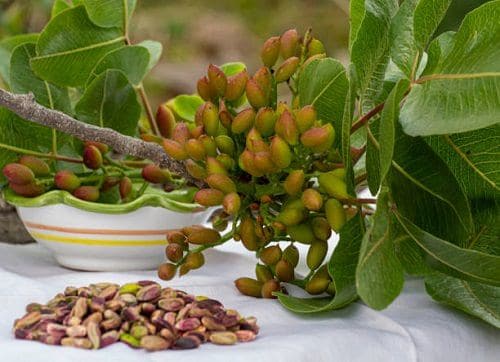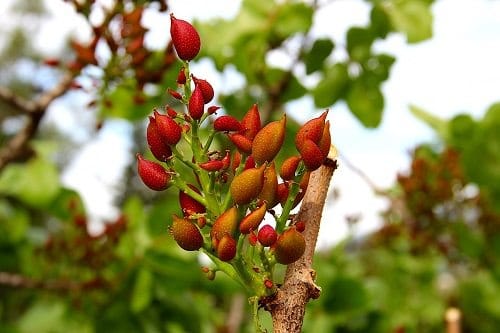Quite famous for garnishing desserts and used widely in baking, have you ever wondered Where Do Pistachios Come From? Let’s find out!
Pistachios are one of the most popular nuts, consumed on a large scale in the entire world, both fresh or roasted. China tops the consumption, followed closely by America. It is also rich in protein, dietary fiber, and Vitamin B. When this nut is so popular, questions like Where Do Pistachios Come From? Where do they originate are quite common?
Want to know where do peanuts come from? Click here.
About Pistachios

Native to Western Asia, Pistachios are a member of the cashew family. famous for their use in cakes and puddings. It is also a part of sauces, salads, and sesame seed balls.
People often keep finding different reasons to include Pistachios in their meals because of their taste and high nutritional value. They are not only loaded with nutrients and antioxidants but also are low in calories and high in protein.
Where Do Pistachios Come From?
Pistachio comes from the pistachio tree. It was originated in western Asia and Asia Minor, from Syria to the Caucasus and Afghanistan. It is also grown in the Middle East and Central Asia. Almost half of the total world’s production of pistachios comes from Iran followed by the USA. Other countries include Greece, Turkey, and Syria.
It grows best in areas where the winters are cold (this helps the tree to break the dormancy of the buds) with long, hot, and dry summers. The tree has a high tolerance of saline soil and requires a lot of sunlight. During dormancy, the temperature of up to 14 °F (-10 °C) is not going to harm the tree. During summer, it does well in 77-97 °F (25 to 36 °C).
How to Grow a Pistachio Tree?

When it comes to growing pistachios, you have to be extremely patient as it may take as long as 8-10 years for the tree to start bearing drupe fruits. Moreover, the tree will fully mature only when it is fifteen years old. You can grow your Pistachio tree by following these steps:
- Get untreated, unroasted, unheated, and unsalted seeds. You can get them from a local nursery, from a local producer or search online.
- Take a damp towel and wrap the seeds. Put the towel in a small zip plastic bag.
- The seeds will germinate and form seedlings in 2-4 weeks.
- Plant them in individual pots and keep at a spot where it can receive 5-6 hours of sunlight.
- Keep the soil moist but not soggy.
- When the young plants will reach a height of 6-8 inches, you can transplant them to the garden.
Or
You can also get a mature pistachio plant from a nearby nursery or a garden center. This will save your time and efforts!
Benefits of Eating Pistachios

The best part about eating pistachios is you can eat them raw, in desserts, cuisines, or various other ways too!
- Pistachios are good for weight watchers as they are a rich source of good fat, protein, phosphorus, Vitamin B-6 along with several other nutrients. However, make sure that you not overindulging.
- They are rich in both lutein and zeaxanthin, essential for eye health.
- With more than 5 grams of protein in an ounce of serving, they make for a great alternative for vegans.
- These nuts also have a low glycemic index. As they don’t spike the blood sugar levels, they may help in lowering the risk of diabetes.


